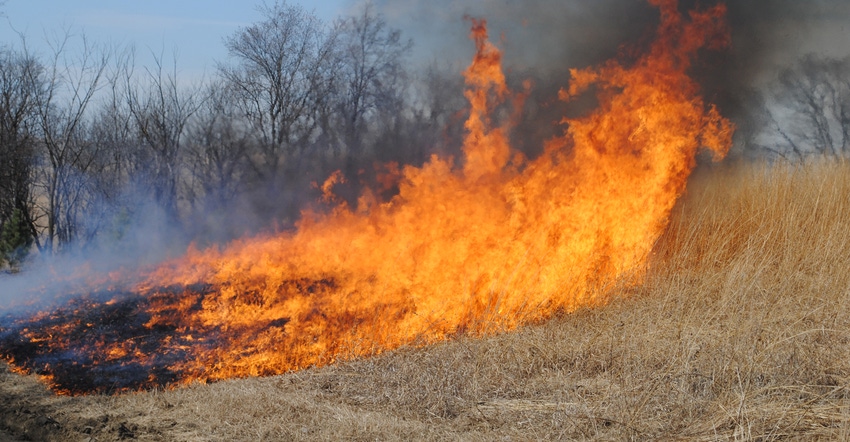
What if we’ve been going about reclaiming grazing lands from encroachment of invasive eastern red cedar trees all wrong? There is no denying the issue.
Between 2005 and 2015, cedar seedlings in Nebraska doubled to nearly 275 million. The Nebraska Forest Service estimates that 333,134 forest acres in cedar in 2015 amounts to about 22% of the state’s forested area.
Thanks to mechanical removal and other means, the spread has slowed since 2009, and the state’s cedar forest declined by 30,000 acres between 2013 and 2015. However, the problem remains monumental, and the state’s rangeland and livestock producers are negatively affected if the problem isn’t controlled.
At a series of recent workshops sponsored in part by the Nebraska Grazing Lands Coalition, Nebraska Cattlemen and the Sandhills Task Force, Nebraska rangeland ecologist Dirac Twidwell told producers that our strategy so far is flawed.
Rather than dumping endless resources into the worst areas of encroachment, and trying to tackle large cedar trees and clear vast areas, Twidwell suggested trying something new. He believes that the best and most efficient use of resources is to start in areas of rangeland where cedar trees are just beginning to invade, clearing those areas first, and then working back into the worst spots.
Starting with grasslands
“This strategy is more effective when people consider the ecology of encroachment, which starts with the reproduction pathway,” Twidwell explained. “Spread into grasslands comes from a seed source, and 95% of cedar encroachment in the Nebraska Sandhills occurred within 200 yards of a seed source.”
If producers manage cedars by only cutting mature, reproducing trees, then landowners can never catch up to seed distribution. “That means that they have to come back to cut again in the future,” Twidwell said. “Manage the seed, prevent seedlings from becoming mature and anchor efforts to healthy grasslands.”
After that battle is won, then push back against the more mature stands, he added.
“Multiple management options have the potential to manage the encroachment process,” Twidwell said. “There is no silver bullet. But only fire has the potential to manage all phases of encroachment at once, because fire consumes seed, kills seedlings and can kill mature trees and larger stands.”
At a low cost of only $5 to $10 per acre, no other tool at a landowner’s disposal has the potential to do all four things at once like fire.
The best success stories in winning the battle against encroachment have been where landowners have banded together to use prescribed fire to burn grasslands before cedar trees become a visible problem. “These areas have been shown to be more capable of preventing grassland loss,” Twidwell added.
“Woody encroachment is a national rangeland problem, and it is taking land out of agricultural production,” he noted. “It shows we have weakness in our management, and it is tied to trees.”
Intact rangelands are most resilient to woody encroachment, but to prevent the expansion and loss of intact grasslands, new seed-producing trees must be prevented.
“The Great Plains still has some of the most intact grasslands remaining on the planet,” Twidwell said. “The Sandhills produced more than 30 billion pounds of total grass production last year.”
But no state or region has fixed the cedar problem once encroachment has taken over, he said. “Don’t wait to act,” Twidwell said. “You can’t control the problem just on your own property. We are seeing the need to band together and to scale up and think bigger. The areas where we see landowners cooperating and working together are the areas in the Great Plains where we are seeing the greatest success.”
Learn more by contacting Twidwell at [email protected].
About the Author(s)
You May Also Like






